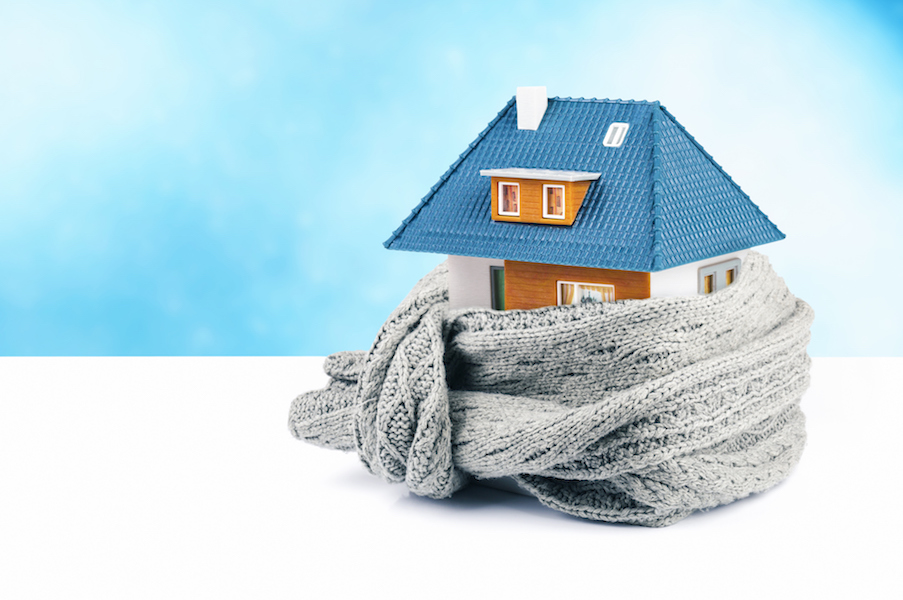6 ways to insulate your home and save money
The end of the long, hot summer coupled with rising energy prices means it’s a good time to check that your home is properly insulated before winter sets in.
According to the Energy Saving Trust (EST, energysavingtrust.org.uk), in an uninsulated home, 45% of heat loss is through solid walls, 33% through other walls, 25% through the loft or roof space, and 20% through windows and doors – which all adds up to hundreds of pounds more spent on energy bills every year, no good for your pocket or the environment.
In short, properly insulating your home is an environmentally-friendly move that could save you a fortune over the years. As the EST notes: “There are many ways to insulate your home, which will not only save you money but are better for the environment too. Some options are relatively simple – from lagging pipes to even insulating a loft – and can be completed by a householder.”

Keep your home toasty and save money
Here are the six main areas the EST says need insulating in the home, and how much you could save on energy bills…
1. Roof and loft
Insulating the loft or attic is a simple and effective way to reduce heat loss and heating bills, and it should pay for itself many times over, says the EST. If access is easy and loft joists are regular, you can use rolls of mineral wool insulation. This will keep your house warmer but make the roof space above colder, meaning pipes and water tanks in the loft could freeze more easily, so you’ll need to insulate them too.
In addition, the cooler air in your insulated loft could mean cold draughts come through the loft hatch, so fit an insulated loft hatch and put draught-excluding strips around it. If your loft is easy to access, isn’t damp and doesn’t have a flat roof, you could probably insulate it yourself, but where there’s damp a professional installer should be used.

Some insulation jobs you can do yourself, but call in the professionals for bigger tasks
How much can you save?
The EST says typical installation costs for roof insulation are between £285-£395, depending on the size of the house, and fuel bill savings can be between £115-£215 a year.
2. Cavity walls
Heat will always flow from a warm area to a cold one, so the colder it is outside, the faster heat from your home will escape. Houses built from the 1990s onwards usually have wall insulation, but older houses may not and could be losing a lot of heat.
Most types of wall can be insulated, though you need to identify what sort of walls you have. If a house was built after the 1920s, it’s likely to have cavity walls (two walls with a gap in-between). Older houses are more likely to have solid walls. You can tell which type of wall your house has by looking at the exterior brickwork: if the bricks have a regular pattern, the house usually has cavity walls, and if there’s an alternating pattern, it probably has solid walls.
How much can you save?
The EST says cavity wall insulation can cost between £330-£720 to install, depending on the type of house, and savings on heating bills can be anything from £65 a year for a flat to £250 a year for a detached house.
3. Solid walls

Fitting insulating mineral rock wool
Solid walls let through twice as much heat as cavity walls, but they can be insulated, either from the inside or outside. Internally, rigid insulation boards are fitted to the wall, or a stud wall is built and filled in with insulation material. Externally, a layer of insulation material is fitted to the wall, then covered with a special type of render or cladding. There are advantages and disadvantages to both methods, says the EST.
How much can you save?
Solid wall insulation usually costs more than insulating a standard cavity wall, but heating bill savings are bigger. The EST says external wall insulation costs between £8,000-£22,000 and internal costs £4,000-£13,000. Savings can be anything from £115-£415 a year,
Want to save £300?@Ofgem says ‘Switching suppliers can help consumers get the best deal, saving around £300. If people think #energybills are too high, they should vote with their feet and switch.”
Use a price comparison site and start saving: https://t.co/KZZWnP3tHY pic.twitter.com/wCrCDjdNj2
— Energy Saving Trust (@EnergySvgTrust) September 12, 2018
4. Floors
You can seal the gaps between floors and skirting boards yourself with a DIY store sealant. Older homes are more likely to have suspended timber floors, which can be insulated by lifting the floorboards and laying mineral wool insulation supported by netting between the joists. Many homes, especially newer ones, will have a solid concrete ground floor. This can be insulated when it needs replacing, or can have rigid insulation laid on top.
Floors of upstairs rooms don’t need to be insulated if they’re above heated areas, but it’s a good idea to insulate those above unheated spaces, such as garages.
How much can you save?
Insulating the floor can cost anything from £950-£2,200, and savings range from £25-£65 a year.
5. Tanks, pipes and radiators

Lagging pipes
Lagging water tanks and pipes and insulating behind radiators reduces the amount of heat lost, so you spend less money heating water and it stays hotter for longer.
Ftting a hot water cylinder jacket is straightforward, says the EST. Pipe insulation is simply a foam tube that covers the exposed pipes between the hot water cylinder and boiler. It can be bought from a DIY store and slipped on.
How much can you save?
Savings vary widely depending on what work is done, but the EST says installing a hot water tank jacket on an uninsulated tank, for instance, will cost about £15 and save around £89 a year.
6. Draught-proofing
Draught-proofing is one of the cheapest and most effective ways to save energy, and it’s as simple as using sealant to block unwanted gaps around areas including windows and doors, and around pipework leading outside.
How much can you save?
Professionals can draught-proof your home at a cost of around £200, but it’s often easy and much cheaper to do it yourself. Make sure you don’t block any intentional ventilation, such as under-floor grilles, air bricks or vents though.
Draught-proofing around windows and doors could save around £25 per year. and as draught-free homes are comfortable at lower temperatures, you may be able to turn down the heating, saving even more on energy bills.
How to find a good installer
For more information on saving energy, visit energysavingtrust.org.uk. Looking for a good installer? The National Insulation Association is a member organisation for the insulation industry in the UK. For details of local installers, visit nia-uk.org
The Press Association
Latest posts by The Press Association (see all)
- Princess Charlotte ‘s ninth birthday marked by picture release - May 2, 2024
- Strong passwords more important than ever, experts warn - May 2, 2024
- Princess Charlotte set to celebrate ninth birthday - May 1, 2024
- How edible flowers can make your dishes look and taste divine - April 30, 2024
- Beauty entrepreneur Liz Earle on turning 60: Ageing is a gift - April 30, 2024




















